We’ve got a special treat today here at FIRESTORM FAN – a fantastic interview with Firestorm writer, Stuart Moore!
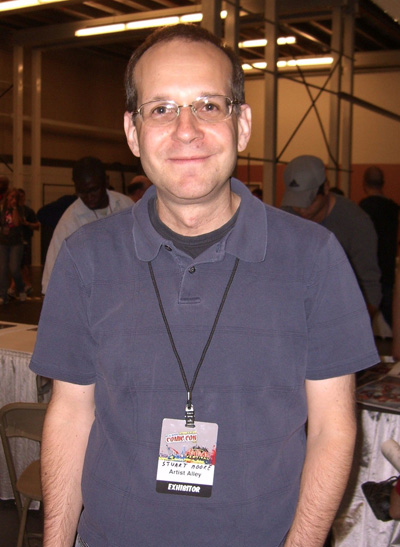
Stuart Moore wrote FIRESTORM vol III for 19 issues from 2005 through 2007. Thanks to the length of his run, Stuart has written Jason Rusch more than any other writer. Stuart’s run brought dramatic changes for the FIRESTORM title, including: the return of Professor Martin Stein and Mikhail Arkadin, Firehawk joined the Firestorm matrix, incredible growth in Jason’s character, the introduction of Gehenna, and much more!
Stuart Moore has been a writer, a book editor, and an award-winning comics editor. He’s written many titles, such as: NAMOR: THE FIRST MUTANT, CLOAK & DAGGER, WOLVERINE NOIR, THE 99, DETECTIVE COMICS, EARTHLIGHT, PARA, SHADRACH STONE, and much more! Before turning to writing, Stuart was a book editor at St. Martin’s Press, publishing a wide variety of science fiction and pop culture books. More recently he served as editor of the Virgin Comics / SciFi Channel comics line, and of the bestselling Marvel Knights imprint, where his credits included Brian Michael Bendis’s ALIAS and DAREDEVIL and the Garth Ennis/Steve Dillon PUNISHER. At DC Comics, Stuart was a founding editor of the acclaimed Vertigo imprint, where he won the Will Eisner award for Best Editor 1996 and the Don Thompson Award for Favorite Editor 1999. His editorial credits there include PREACHER, THE INVISIBLES, SWAMP THING, HELLBLAZER, THE BOOKS OF MAGIC, TRANSMETROPOLITAN, and too many others to mention.
Stuart was kind enough to spend some time discussing his run on Firestorm with FIRESTORM FAN.
BACKGROUND
FIRESTORM FAN: How did you first get interested in reading comics and what were some of your favorites?
STUART MOORE: Most people I know either liked DC or Marvel growing up…I have a slightly different story. When I was young, I only read DC Comics; I think I still have a copy of ACTION from when I was five years old. Then, when I was in high school, a friend sat me down with huge piles of Marvel comics — this was before trade paperbacks, but it was the same effect, just enormously long, sprawling runs of stories. And it completely changed me, opened up my mind to all this great, crazy stuff. So to me, DC Comics are the books I loved as a kid, but Marvel are the really exciting, dangerous ones.
FF: What attracted you to writing comics and how did you break into the business?
SM: I’d always done some writing, but I started out as a book editor, then a comics editor. When I was at DC/Vertigo, DC wasn’t really encouraging staff people to write anymore, which I understood — there’s a lot of potential for conflicts of interest there. Though I’ve come around a bit to thinking it can be managed, and that some of the best work of the ’70s and ’80s was done by writer/editors.
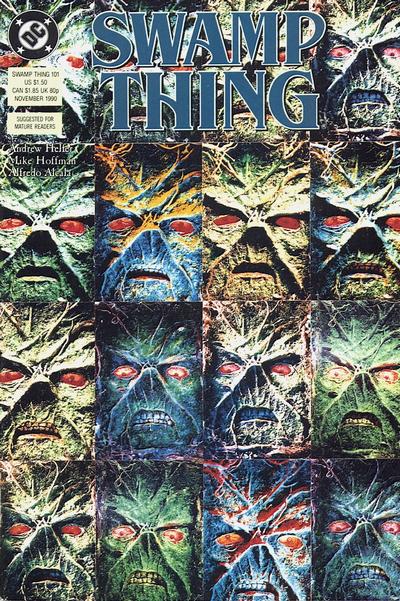
Anyway, I left DC in 1999 and had a short stint at Marvel Knights, then started writing full time. I wrote everything — indy stuff, my own work, short stories for anthologies. I still do, actually. Jumping around between genres, styles, and companies keeps me fresh.
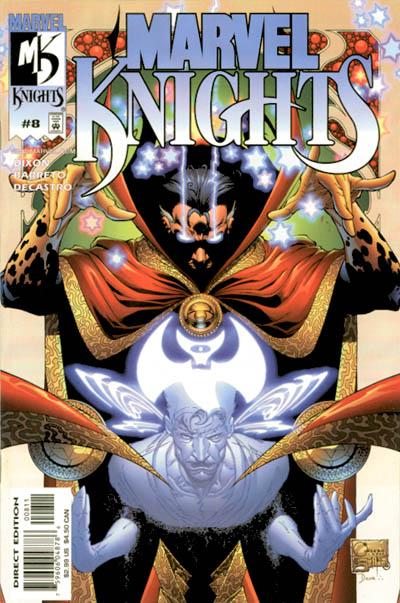
FF: What do you find are the major influences on your work?
SM: There are a hell of a lot of them, actually. In comics: Alan Moore, Steve Gerber, Howard Chaykin. In books: Philip K. Dick, Charles Willeford, Cordwainer Smith, recently Rick Moody. A lot of film, too, particularly the work of Alex Cox.
FF: Who would win in a fight – Willie Lumpkin or Doiby Dickles?
SM: Bet on the mailman. He’s got all the keys.
FIRESTORM
FF: How did you get the Firestorm assignment?
SM: I’d written some JLA ADVENTURES stories for Steve Wacker, who fled to Marvel after almost a year editing the monstrous 52. At that time, Steve had recently inherited FIRESTORM, which was going through a gradual but full creative team changeover. Steve knew I had a background in science fiction and thought that would work for the character.
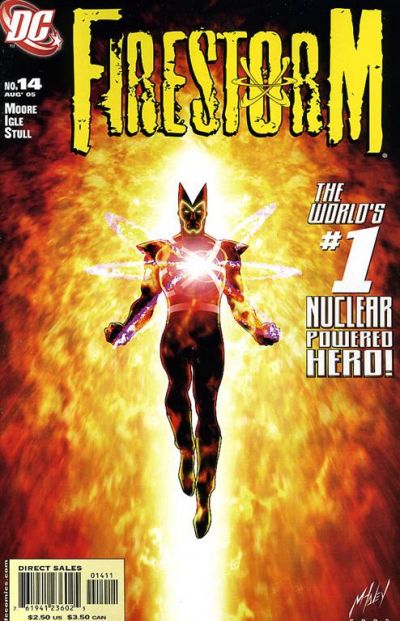
FF: You incorporated lots of Firestorm history into your run (i.e. Firehawk, Pozhar, Tokamak).Were you familiar with the character before taking the job? If so, do you have any favorite issues, storylines, or characters?
SM: I love the character…I actually got hooked in the first few issues of the very first run, when it was abruptly canceled in the middle of a storyline. It was the purest example of a Marvel-style character in the middle of the DC Universe, which was pretty cool at the time. Firestorm also had a great rogues’ gallery, and Firehawk was a volatile, exciting supporting character.
FF: What aspects of Firestorm did you enjoy writing the most? What aspects did you find the most challenging to write?
SM: I really liked Jason, the character. It was very important to me to deal with his relationship with his father and his mother, whom I introduced. The stuff with the father was tricky because the book had been written into a corner: In the very first issue, before I came onboard, we’d seen Jason’s father hitting him. To my mind, once you do that, the character either has to fight back directly or else he has to roll out a series of complex, difficult distancing techniques, which people in abusive relationships do all the time. I worked pretty hard on that aspect of the story.
The pseudo-science was fun too. And the racial undertones, which were mostly in the background but very, very important to who the character was.
The challenging part was that the editorial mandates about the character changed frequently. That’s part of working on a company-owned book, and I think we rolled with it all pretty gracefully.
FF: Were there any situations where editorial or company-wide events impacted your plans? Did the Infinite Crisis, Villains United, and OMAC Project tie-in stories come naturally or did they create challenges for you?
SM: Oh, that was part of the game from day one. FIRESTORM was a borderline-selling book when I came on; we knew we had to take every opportunity offered to keep sales up. And I liked the idea of Jason, who had just graduated from high school, being the young guy thrown into the middle of the DCU, almost like an identification character for the reader. “That’s Donna Troy! She looks like a goddess!” That sort of thing.
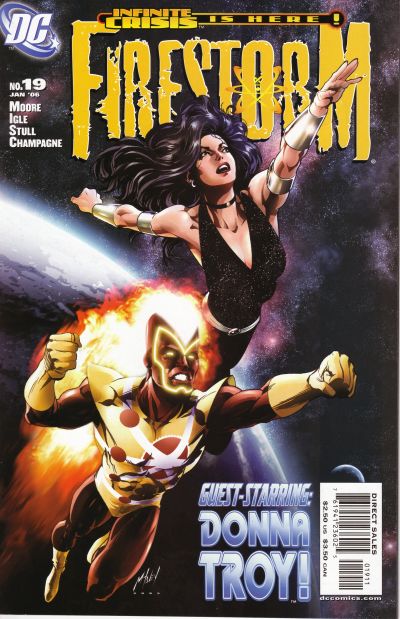
FF: What would you say are some elements that make a story a “Firestorm story”, rather than just any other superhero story?
SM: There have been several different takes on the character, so I don’t know if you can generalize too much. But to me, it’s the interplay between the two people making up the persona. We dealt with that in a lot of different combinations. I initially resisted bringing Professor Stein back into the book, but I will say that once it was him and Jason, the character just MOVED. It shows that Gerry Conway knew what he was doing — the young kid, all energy and impulse, combined with the older man who knew the science. They’re doing a variant on that now, with Jason as the science-savvy half.
FF: While working on Firestorm, you had the opportunity to work with Jamal Igle on interiors, and Matt Haley & Brian Stelfreeze on covers. What were some characteristics these artists brought to your stories? Did you write full-script or plot-first, and how collaborative were your relationships?
SM: Full script, as I write just about everything. Jamal was a great collaborator…he’s very underrated; he can draw anything, and when you give him a little room, there’s an amazing power to his action sequences. I had a storyline in mind that we didn’t get to, a racially sensitive story about Jason’s mother, and I probably would have asked Jamal to be a more active co-plotter on that.
As for the covers, both artists were just great. I didn’t have much direct interaction with Matt or Brian, but they did superlative work.
FF: You created some interesting supporting characters for the Firestorm title. Were there any you enjoyed writing more than others?
SM: Gehenna was a lot of fun…her directness, her lack of tact. I thought Professor Stein would be a drag, but I kind of liked him as the shell-shocked older guy among all these young people. And Lorraine, Firehawk, was great to write. I loved that she had a whole career, a calling that was important to her and that had nothing to do with being a superhero. Sometimes she seemed like the only adult in the whole book.
FF: Just to satisfy my fanboy curiosity, I always had the sense you were leading up to Jason and Doctor Otaki merging to become Firestorm. Was that ever part of your plans?
SM: No, that was never the plan. I can’t remember exactly how she fit in…I think she was just there as one of Jason’s many mentors, somebody who’d been through real bad shit on a level he’d hopefully never know.
FF: Any thoughts about what happened to Gehenna after your Firestorm run and in Blackest Night?
SM: It wasn’t what I’d have done, but that’s fine. When you create characters for company-owned books, they always live on (or die, in this case) after you’re done with them.
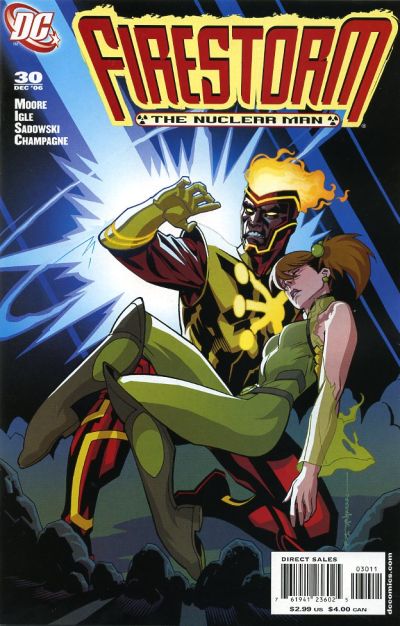
FF: In the climatic battle with Tokamak, he said to Jason, “I know why you’re Firestorm”. Jason never uncovered what that meant. Can you tell us anything about that cryptic message?
SM: I did have something in mind for that…after all, it was never really explained why the Firestorm energy chose Jason when Ron Raymond died, though the Earth-8 thing provides a certain justification, now. Anyway, I had an idea for an extended story involving Jason’s ancestry and the origins of life on Earth, little stuff like that. I’m sure there are notes for it around somewhere, which I’ll use for something else. But I deliberately wrote the ending so it could also be read just as Tokamak screwing with him, giving him one final jab.
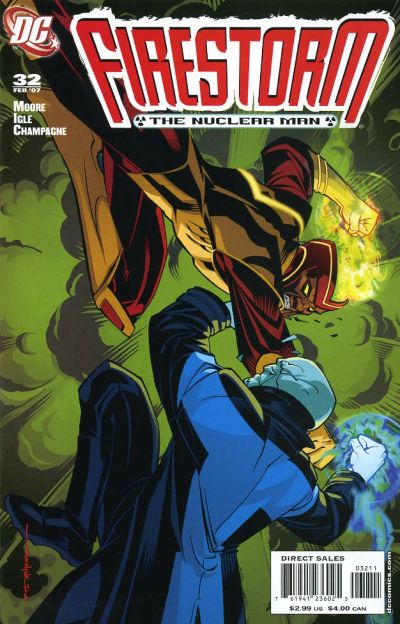
FF: Why did you leave the Firestorm book?
SM: I left because it was canceled. Then they decided to extend it for three more issues, tying it heavily into some New Gods continuity, and they brought the late, much-missed Dwayne McDuffie on to do those. But the book was already dead.
AFTER YOUR FIRESTORM RUN
FF: You recently had the opportunity to write the Ronnie Raymond/Jason Rusch incarnation of Firestorm in JLA/The 99. What differences did you find writing Firestorm for that mini-series versus your previous Firestorm experience?
SM: I originally thought I’d stay away from that character, leaving those scenes to Fabian (my cowriter), precisely because it WAS so different from the character I’d written. But through circumstance, I wound up writing a lot of those scenes, and I really enjoyed it. Firestorm’s role in JLA/99 kept growing because of his powers — he’s a great team-up player because he’s very mobile, and because he can actually draw members of the other team inside himself.
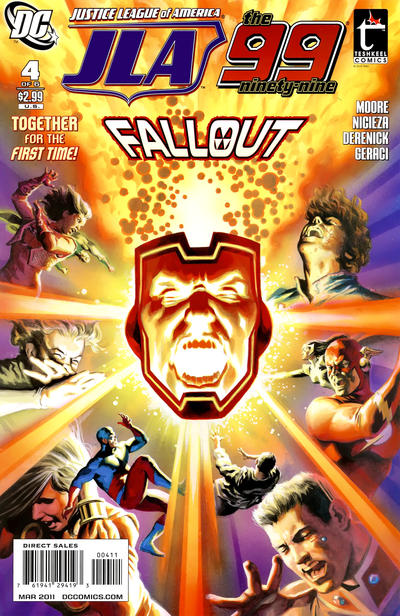
FF: You’ve written more Jason Rusch stories than any other writer. Any words of advice for Gail Simone, Ethan Van Sciver, and Yildiray Cinar as they relaunch Firestorm?
SM: Oh god, I wouldn’t presume to give advice. Those guys know what they’re doing. The initial graphics look fantastic.
FF: What comic books are you reading nowadays?
SM: Most of my mainstream work is at Marvel these days, and I read basically everything there by Bendis, Fraction, Millar, lots of other guys I don’t want to offend by forgetting to mention. I’ll read anything by Grant Morrison, whom I’ve known forever. I’ve recently been catching up on SCALPED, THE BOYS, and SCOTT PILGRIM, all of which are absolutely amazing in completely different ways. But I read a lot more prose these days.
FF: Looking back at all the work you’ve amassed during your career, what are you most proud of? What do you consider a high point both personally and creatively?
SM: FIRESTORM is the longest run I’ve had on a company-owned book, and I’m still proud of the character work in particular on that book. My original graphic novels PARA and EARTHLIGHT are both very personal works that I like quite a bit. I also really like the Wolverine stories I’ve written, particularly WOLVERINE #41 (“The Package”), WOLVERINE NOIR, and the UNDER THE BOARDWALK special. But the answer to that question changes every day. I wrote some STARGATE ATLANTIS comics that absolutely no one read — I have scientific proof — but that came out really nicely.


FF: Are there any projects you are currently working on or have coming up?
SM: I’ve just finished up NAMOR at Marvel, which finished off pretty strong, I think. Since then I’ve written a bit of SPIDER-MAN and I’m currently adapting the upcoming JOHN CARTER film into a young adult novel for Disney. In July, I had a WOLVERINE/DEADPOOL: THE DECOY one-shot, from Marvel, and a sort-of adaptation of the new CONAN film, THE MASK OF ACHERON, from Dark Horse. I have a few original comics projects in development, and I also run a small graphic-novel packaging partnership called Botfriend. I like to keep busy.

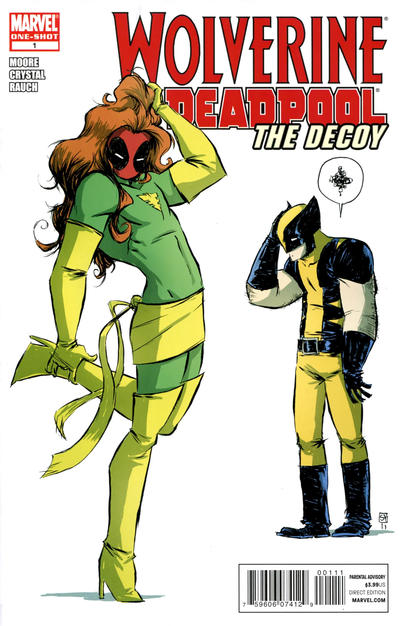
FF: What would your dream comic book project be?
SM: I don’t think in terms of ultimates and dreams; but a long-form, creator-owned monthly would be great. Other than that, I’m happy bouncing around.

Thanks to Stuart Moore for generously donating his time to this interview! To keep up with Stuart, check out on his blog, Pensive Mischief, and follow him on Twitter. Be sure to tell him FIRESTORM FAN sent you! For more on Stuart’s era of Firestorm, click here for a FIRESTORM FAN interview with artist Jamal Igle!
Thanks for stopping by and I hope you enjoyed the interview!
Support Firestorm! Fan the flame!
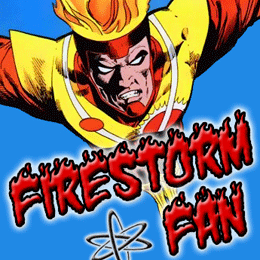
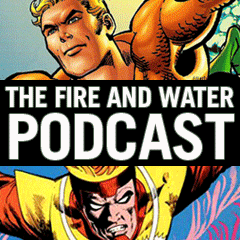
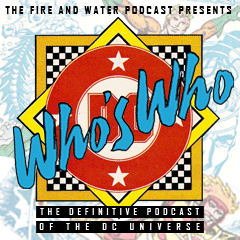
I think I read one issue of his work on Firestorm, but I never got too much into the character until Blackest Night.
Be that as it may, I really liked his work on Namor even if the writing was sort of on the wall for that series from the very beginning. Moore wrote some really great interactions between Namor and Dr. Doom, which I thought was both fun and funny to read. Funny, because both Namor and Doom are just such jerks so seeing them interact is amusing. And fun because while a lot of times modern readers (myself included) don’t think about it, Namor and Doom are probably the closest thing each of them has to a friend. So I applauded that insight and clever approach.
Good interview, Shag!
Another excellent interview. He’s a great subject.
Follow up on the “Marvel hero in the DC Universe” comment some time. I’m interested in what he meant (and what you think he meant) there.
Keep ’em coming. The quality is very high! Great blog!
While I’m obviously glad that Moore found out just how interesting Martin Stein could be, I can’t help but feel that his initial aversion to the character isn’t that far removed from most everyone else at DC these days (and most of them never gave Stein the chance that Moore gave the character). I just don’t understand why everyone hates (hated… RIP) Stein so much….
Yeah, I’m still pretty bitter about that….
Great Q & A. I do mean both the Q & A. I read most of this series, and really enjoyed Moore’s old 1,000 Flowers column. In fact, I drifted away from Newsarama after it ended…